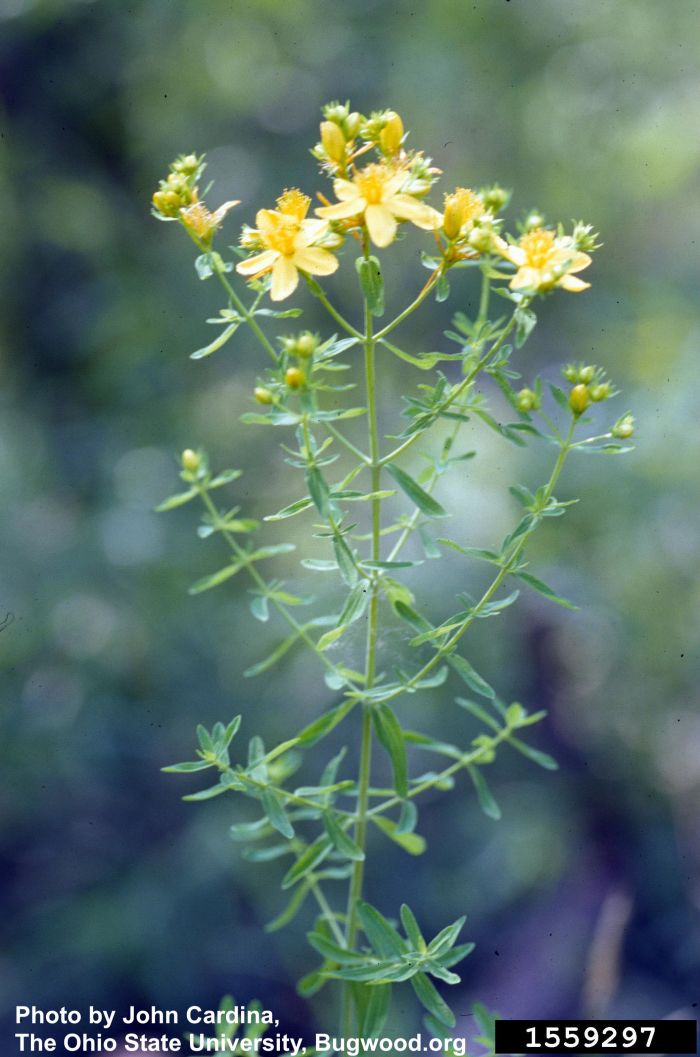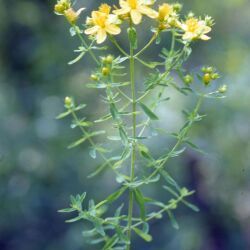
Priority: Contain
General: A branching plant that has become popular as a herbal remedy for a variety of health issues.
Height: Grows up to 1m tall.
Flowers: Small yellow flowers (2cm) in flat-topped clusters. They have 5 petals.
Leaves/Stems: Leaves grow across from each other on the stem (opposite), 1-3cm long. They are oval in shape with veins and transparent dots all over them.
Root: Short creeping roots.
Klamath weed, Goatweed.
None
Where did it come from? Eurasia.
Where does it grow here? Grows in a variety of environments and prefers dry, gravelly or sandy soils. It is found near housing as well as lake shores in our region.
Reproduction: By seed and root. The root can form buds that break off from the parent plant. One plant can produce 15-30,000 seeds.
When does it grow, flower & seed? Sprouts April-May. Flowers June-August. Seeds September-October.
Spreads By: People have been known to plant it. Seeds have a gelatinous coat that allows it to travel long distances. Seed can stay viable in the soil for 6-10 years so soil movement or disturbance can expose seeds and plant growth can occur.
Plant Type: Perennial.
- It contains a toxin that can cause skin irritation in livestock if they eat this plant. The skin irritation is triggered in light-coloured livestock when they are exposed to sunlight.
- Reduces forage for livestock & wildlife if stands become large in pastures or forested areas.
- It can compete with native species and reduce their numbers.
- Review your property regularly for this species. Do not plant it.
- Treatment Remove small patches before it flowers & sets seed. Tillage in fields can be a good control method. There are biocontrol agents (beetles, moth & aphid) that have been released on infestations.
- Cover bare patches or disturbed soil by planting or seeding with non-invasives.
- Check areas where you have removed invasives for any new plants that year and in future growing seasons.
- Dispose of invasive plants responsibly. Bag them for disposal at the local landfill. Composting and burning are not recommended.
- Contact LRISS for specific treatment recommendations.
Southern Interior Weed Management Committee. 2016. Invasive Plants of the Southern Interior BC. 86pgs.
Okanagan Invasive Species Online website.
